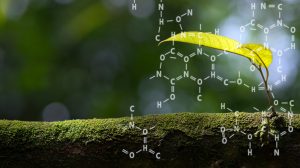Definition
noun, plural: white adipose tissues
A type of adipose tissue found in mammals used to store energy and acts as thermal insulator that helps maintain body temperature
Supplement
The adipose tissue is a special type of connective tissue that stores fat (lipids). The fat that the adipose tissue stores is usually in the form of triglycerides. This lipid may be degraded later in order to provide energy upon demand. Other functions of the adipose tissue are for cushioning and insulating the body. It also produces hormones. There are two major types of adipose tissues: (1) white adipose tissue (WAT) and (2) brown adipose tissue (BAT).
The white adipose tissue is used to store energy and acts as thermal insulator that helps maintain body temperature. The adipocytes in white adipose tissue are characterized by having a large fat droplet. They also have receptors for insulin, certain hormones, norepinephrine and glucocorticoids. They also produce and secrete hormones, leptin and asprosin.
Breakdown of lipids by lipolysis
When insulin level is low and epinephrine level is high, the rate of lipolysis is high. Lipolysis is the process of lipid hydrolysis catalyzed by enzymes, particularly hormone-sensitive lipases. The epinephrine from the bloodstream binds to the beta-adrenergic receptors of the adipocyte. This causes the adipocyte to produce more cAMPs. cAMP, in turn, binds and activates protein kinase A. Activated protein kinase A activates in turn the hormone-sensitive lipases. The lipases in the adipocyte catalyze the breakdown of triglyceride into glycerol and fatty acid, which will then be released into the bloodstream to reach target cells. For instance, free fatty acids are taken up by myocytes whereas glycerol is taken up by the liver for gluconeogenesis.
Storage of lipids
When insulin is released by the pancreas to the bloodstream, the level of insulin increases. This results in the slowing down of lipolysis by inducing series of reactions that reduce cAMP level and lower sympathetic nervous outflow. Insulin also stimulates pyruvate dehydrogenase phosphatase that removes phosphate from pyruvate dehydrogenase, thereby activating the latter to convert pyruvate to acetyl-CoA. The acetyl-CoA is carboxylated to form malonyl-CoA through the action of acetyl-CoA carboxylase. The malonyl-CoA plays a role in the chain elongation in fatty acid biosynthesis.
In humans, the white adipose tissue is about 20% of the body weight in men and 25% of the body weight in women. The white adipose tissues occur in kidney, mesentery, omenta, behind the eyeball, hypodermis of skin, etc. In other animals, they are found in the blubbers of elephant and whale, the hump of a camel, the fat bodies of frogs, and the tail of Marino sheep.1
Abbreviation/Acronym:
- WAT
Synonym(s):
See also:
Reference(s):
1 White adipose tissue. (n.d.). Wikipedia.org. Retrieved from ://en.wikipedia.org/wiki/White-adipose-tissue







